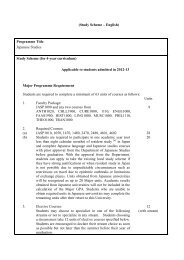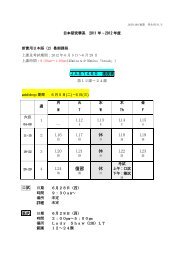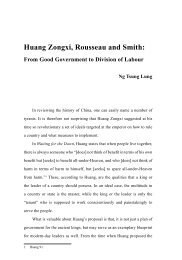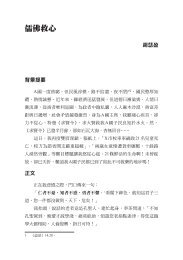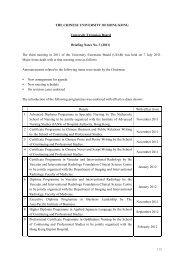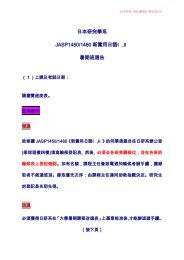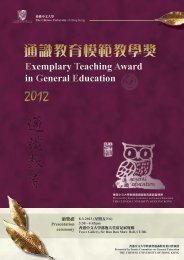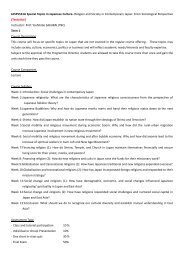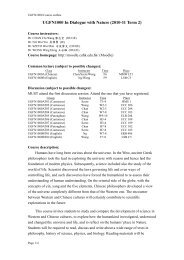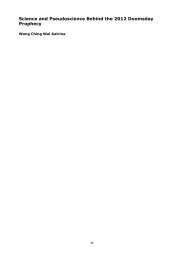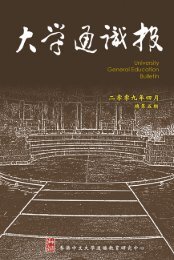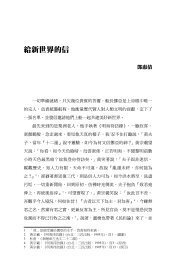ä¸è¼å ¨æ¸ - The Chinese University of Hong Kong
ä¸è¼å ¨æ¸ - The Chinese University of Hong Kong
ä¸è¼å ¨æ¸ - The Chinese University of Hong Kong
You also want an ePaper? Increase the reach of your titles
YUMPU automatically turns print PDFs into web optimized ePapers that Google loves.
Wyman Kwok, Education and Thinking 207<br />
induction,” “propositional logic,” and others. Let us briefly examine an<br />
example <strong>of</strong> argument analysis, but <strong>of</strong> a somewhat special type <strong>of</strong> argument<br />
— a “visual argument.” <br />
Information conveyed by visual images is very common, so that students<br />
should be taught to analyze their argumentative content in addition to the<br />
usual arguments constructed by words. <strong>The</strong> figure in Groarke (2007, section<br />
10) shows a poster promoting a certain brand <strong>of</strong> wine. Students may be asked<br />
to discuss common questions <strong>of</strong> argument analysis such as:<br />
A. What is the conclusion<br />
B. What are the premises<br />
C. Is it a good argument<br />
A suggested solution for the first two questions could be:<br />
Premise #1: If you add vodka to your life, your sleepy life will be<br />
transformed into a life <strong>of</strong> cosmopolitan excitement.<br />
(Implicit) Premise #2: A life <strong>of</strong> cosmopolitan excitement is desirable.<br />
Conclusion: You should add vodka to your life (i.e., purchase vodka).<br />
Although there may be room for disagreement on interpretation, it is still<br />
instructive to motivate students to clearly state the content that they perceive<br />
from the image. <strong>The</strong> last question can be discussed by introducing the students<br />
to some elementary conceptions for evaluating arguments, such as the<br />
plausibility <strong>of</strong> premises or the logical support <strong>of</strong> premises to a conclusion.<br />
When teaching scientific reasoning, my central message to students is<br />
the usefulness and importance <strong>of</strong> applying scientific methods for solving<br />
empirical factual problems. Examples <strong>of</strong> the topics taught are “common<br />
This example is adopted from Groarke (2007, section 10).



